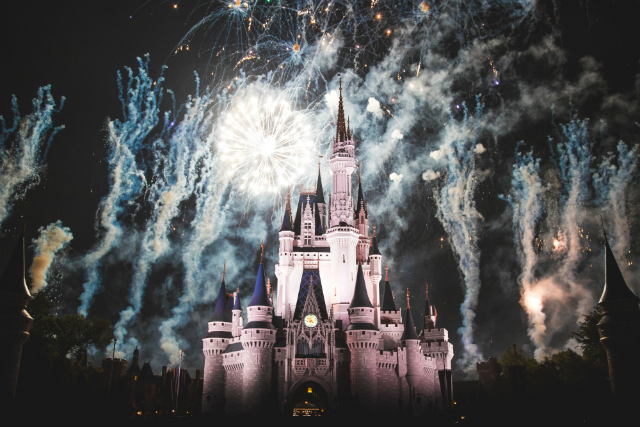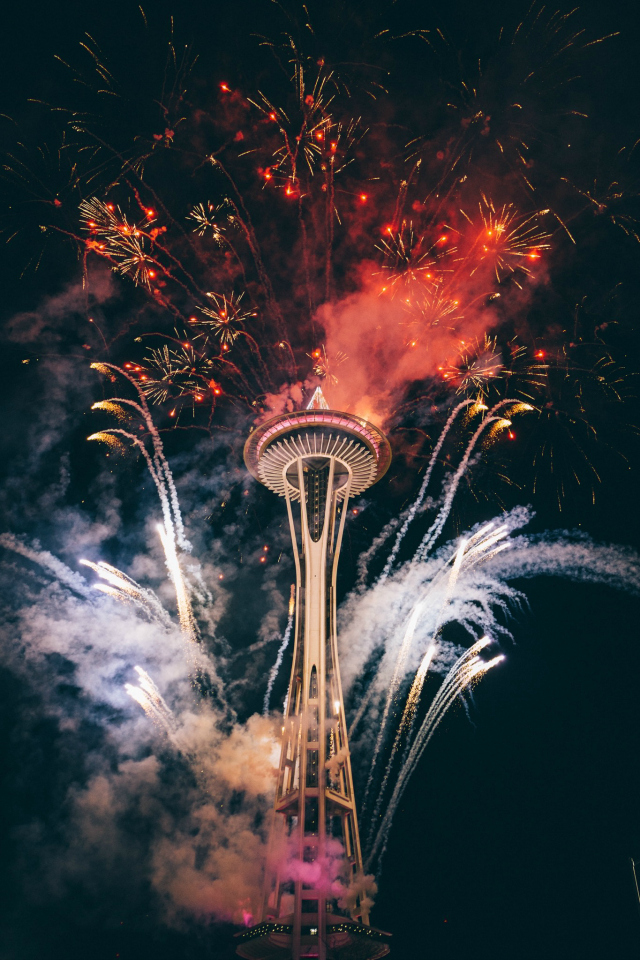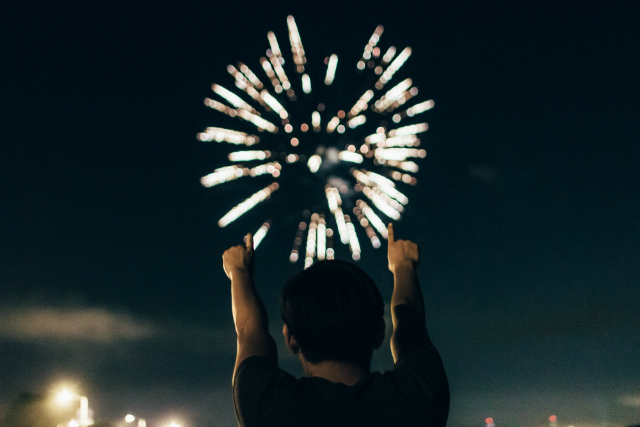The fourth of July is fast approaching. That means one thing: fireworks! Summer doesn't really kick off until the outdoor grills are dusted off, the smell of cooking hot dogs and burgers fill the air, and locals gather for a colorful fireworks display.
There will be tons of fireworks shows all around the country in celebration. While, depending on who one talks to, will have their pick for the best display, any show can be captured well with a little bit of planning and a little know-how with camera settings.
Here are are our top tips for photographing fireworks.
 Credit: Park Troopers[/caption]
While one would normally discourage anyone from checking out a show of any kind on YouTube prior to experiencing it live, photographers get a pass for the fourth.
Capturing fireworks is all about timing. No one would blame a photographer for getting a sneak peak of the show (taking notes for certain show cues are strongly encouraged) if it meant the photographs turned out great.
Credit: Park Troopers[/caption]
While one would normally discourage anyone from checking out a show of any kind on YouTube prior to experiencing it live, photographers get a pass for the fourth.
Capturing fireworks is all about timing. No one would blame a photographer for getting a sneak peak of the show (taking notes for certain show cues are strongly encouraged) if it meant the photographs turned out great.
 Credit: Nitish Meena[/caption]
Especially for all you long-exposure types! Also, certain venues may have restrictions on equipment size. To be safe, bring a compact tripod.
Credit: Nitish Meena[/caption]
Especially for all you long-exposure types! Also, certain venues may have restrictions on equipment size. To be safe, bring a compact tripod.
 Credit: Lori M. Sousa[/caption]
If one wants detail (especially considering that one may end up at a farther vantage point than expected), make sure that trust zoom or telephoto lens is packed.
Credit: Lori M. Sousa[/caption]
If one wants detail (especially considering that one may end up at a farther vantage point than expected), make sure that trust zoom or telephoto lens is packed.
 Credit: Ryan Wong[/caption]
Happy Fourth!
Credit: Ryan Wong[/caption]
Happy Fourth!
When in doubt, turn to YouTube.
[caption id="attachment_4556" align="alignnone" width="640"] Credit: Park Troopers[/caption]
While one would normally discourage anyone from checking out a show of any kind on YouTube prior to experiencing it live, photographers get a pass for the fourth.
Capturing fireworks is all about timing. No one would blame a photographer for getting a sneak peak of the show (taking notes for certain show cues are strongly encouraged) if it meant the photographs turned out great.
Credit: Park Troopers[/caption]
While one would normally discourage anyone from checking out a show of any kind on YouTube prior to experiencing it live, photographers get a pass for the fourth.
Capturing fireworks is all about timing. No one would blame a photographer for getting a sneak peak of the show (taking notes for certain show cues are strongly encouraged) if it meant the photographs turned out great.
Location, Location, Location!
Show up to our fireworks show venue of choice earl and scout for a good spot. One's vantage point is going to be crucial (especially considering these events can get pretty crowded).Must have gear & accessories
A few things to have in our gear bag: Camera: This job calls for a SLR, DSLR, or mirrorless camera. Extra batteries: Your camera is going to be working overtime, which means battery life will drain very quickly. Memory cards: Bring all the memory cards. You will run out of space. I repeat: YOU WILL RUN OUT ON SPACE. Flashlight: Night photography means thinking ahead. There is no time for fumbling with dials you can't read in low light. Electronic cable release: A steady camera is key. The less one has to touch the camera during this process, the better. Speaking of a steady camera...For goodness sakes, use a tripod.
[caption id="attachment_4555" align="alignnone" width="640"] Credit: Nitish Meena[/caption]
Especially for all you long-exposure types! Also, certain venues may have restrictions on equipment size. To be safe, bring a compact tripod.
Credit: Nitish Meena[/caption]
Especially for all you long-exposure types! Also, certain venues may have restrictions on equipment size. To be safe, bring a compact tripod.
Just say no to auto focus hunting
Go manual to better control aperture and shutter speed. Not to mention, having auto-focus on can mean dreaded auto-focus hunting while the fireworks are going off. That's no good.Break out the telephoto lens
[caption id="attachment_4558" align="alignnone" width="640"] Credit: Lori M. Sousa[/caption]
If one wants detail (especially considering that one may end up at a farther vantage point than expected), make sure that trust zoom or telephoto lens is packed.
Credit: Lori M. Sousa[/caption]
If one wants detail (especially considering that one may end up at a farther vantage point than expected), make sure that trust zoom or telephoto lens is packed.
Activate "Bulb Mode"
Double-check to make sure our camera of choice has this functionality. This mode allows our gear to keep shooting until one removes their finger off the shutter button (attention long exposure fanatics).Last-Minute Settings Check
- Vibration Reduction: Turn. it. off.
- Recommended settings: According to the good folks at National Geographic, start at ISO 100, f/11, at 1/2 second.
- File Quality: The highest is preferable.
 Credit: Ryan Wong[/caption]
Happy Fourth!
Credit: Ryan Wong[/caption]
Happy Fourth!






